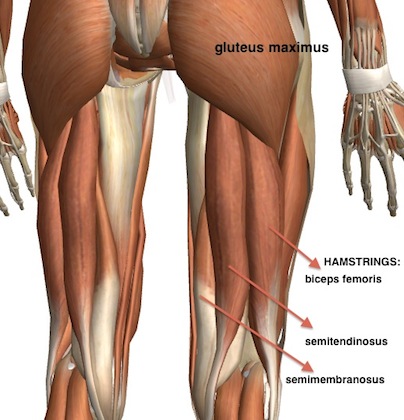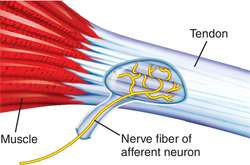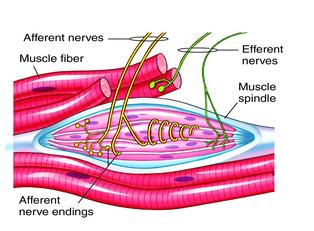
What if I told you that when you stretch a muscle, there’s a receptor in the muscle that senses when you’ve gone too far and actually shuts down your body’s ability to stretch more?Â
What if I told you that even if you push yourself in static stretch, this receptor will actually prevent you from going further (unless you do something else… more on that below)?
Well, it’s true. I’m going to tell you little bit about how this works.
Why? Because I want to potentially change the way you think about stretching. Especially if you’re a yoga teacher or a yoga student who believes that you need to push yourself in every pose to be “more flexible.”
This discussion is going to get a little technical, in terms of the anatomy involved but I’m going to keep it fairly high level and link at the end of the article link to two detailed articles on the topic. But let’s first look at this idea from a high level viewpoint.
We generally think of muscles, in their most basic form, as structures made of connective tissue, that run from one point on a bone to another. These points are called the origin and insertion and when the fibers in a muscle contract or “do their job,” joint movement is created.

If you continue with this idea, let’s then look at two specific points of the muscle. Let’s first look at the attachment of the muscle to the bone. This attachment is made by a tendon, which is basically connective tissue that is comprised of a different material from the connective tissue of muscle, but it does the job of keeping the muscle onto the bone. As a result of its placement on the bone and the fact that it’s also connected to the muscle, it has the unique ability to sense increased tension in the muscle at that junction, or point where it connects to the bone.
As it turns out, there is an actual receptor in the body, called the Golgi Tendon Organ or GTO, which causes a muscle to relax when it’s stretched too far. As you can imagine, if you intentionally (good or bad) tried to overstretch your muscles, you could tear them from their origin. The GTO is designed to prevent that, so it’s a protective mechanism.

Now, there is an additional receptor called the muscle spindle that sits, not at the muscle/bone junction, like the GTO, but in the belly of the muscle itself. It’s sensitive to length, more than tension, as the GTO is. When stretching a muscle, the spindles are stimulated to contract the muscle to protect it from stretching too far.

Both of these receptors have a relationship with the nervous system and that is the communication pathway that results in the action in the muscle. These two receptors work together in a muscle that is under tension (let’s say, when you’re holding Downward Dog for a long time) to create an overall response in the body called autogenic inhibition. Basically, it’s “automatic,” meaning you can’t control it and it’s “inhibition” meaning it inhibits your ability to just stretch like crazy past your healthy range of motion.
The way it all fits together is this: Let’s say you begin to stretch your hamstrings in Downward Dog. If you’re pushing off the floor with tremendous effort along with locking your legs, thinking that you’ll get the most out of the pose by pushing your hamstrings to their greatest length, the muscle spindles will sense the increased tension and they’ll kick in to contract your hamstrings. This can be felt by a sense of “tightness” in the muscle.
As you continue to hold the stretch, the GTO will sense the increased tension at the point of your sitting bones (where the hamstrings originate) and the GTO will override the muscle spindle to cause the hamstrings to relax. At this point, you may feel like you can proceed with the pose without that feeling of initial tightness you first experienced. This process will actually be facilitated if you bend your knees and slightly contract your quadriceps. Why? Because you’ll decrease the tension in the hamstrings, the muscle spindles will back off due to that decreased tension and as you slightly contract the quadriceps you might be able to safely lengthen your legs in the pose because that opposing muscle contraction also triggers the spindles to relax.
If you like to learn more about anatomy and yoga, you might like one of my online courses. You can find them here and they are priced quite reasonably at $10, $20 and $79.00:
Bare Bones Yoga Online Courses
If you prefer to learn through books, I just released my new anatomy manual. This is a soup to nuts guide WITH practical application of what you’ll learn to your teaching:
The Bare Bones Yoga Guide to AnatomyÂ
The guide is $65 but if you purchase it when you read this post, I’ll send you a coupon code so you can get my $79 course for only $59. Just send me an email to karen@barebonesyoga.com and I’ll give you the code.Â
For more information and images on the content above, please check out an excellent resource on the subject, which is Bandha Yoga. I’ll include both links here:
Combine Fire and Water in Yoga
Facilitated Stretching in Yoga
Thanks for reading!
